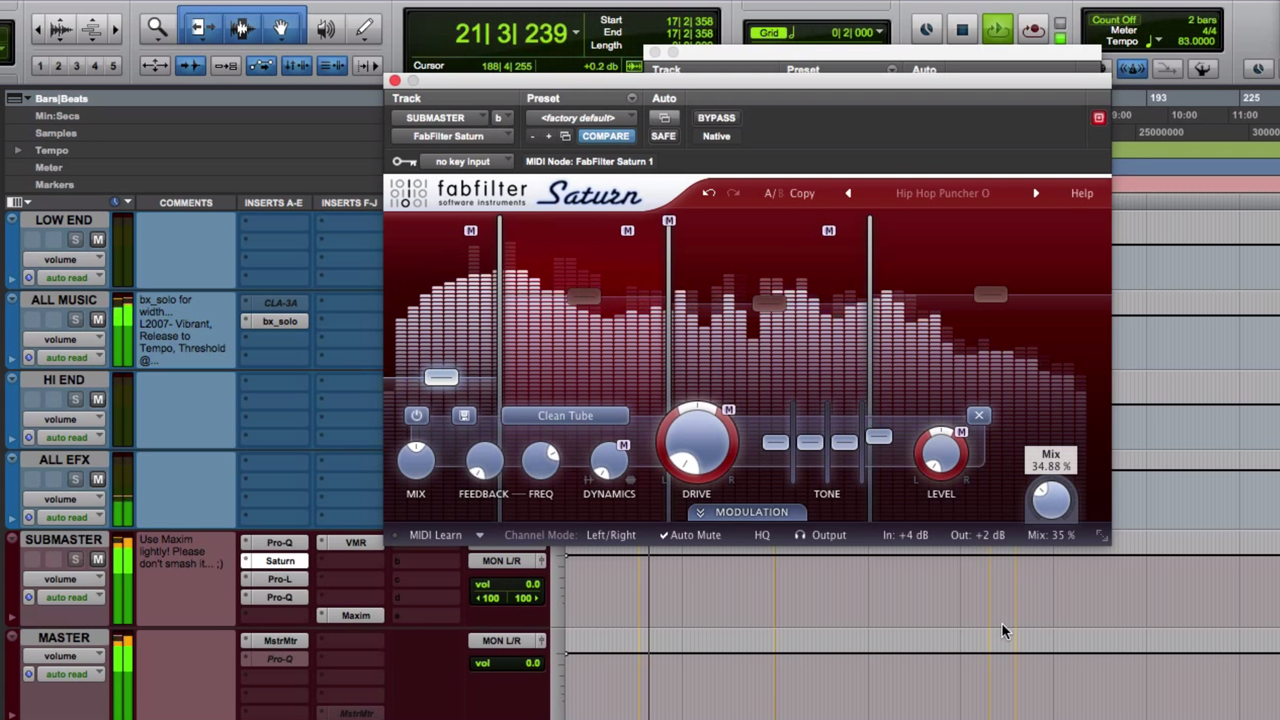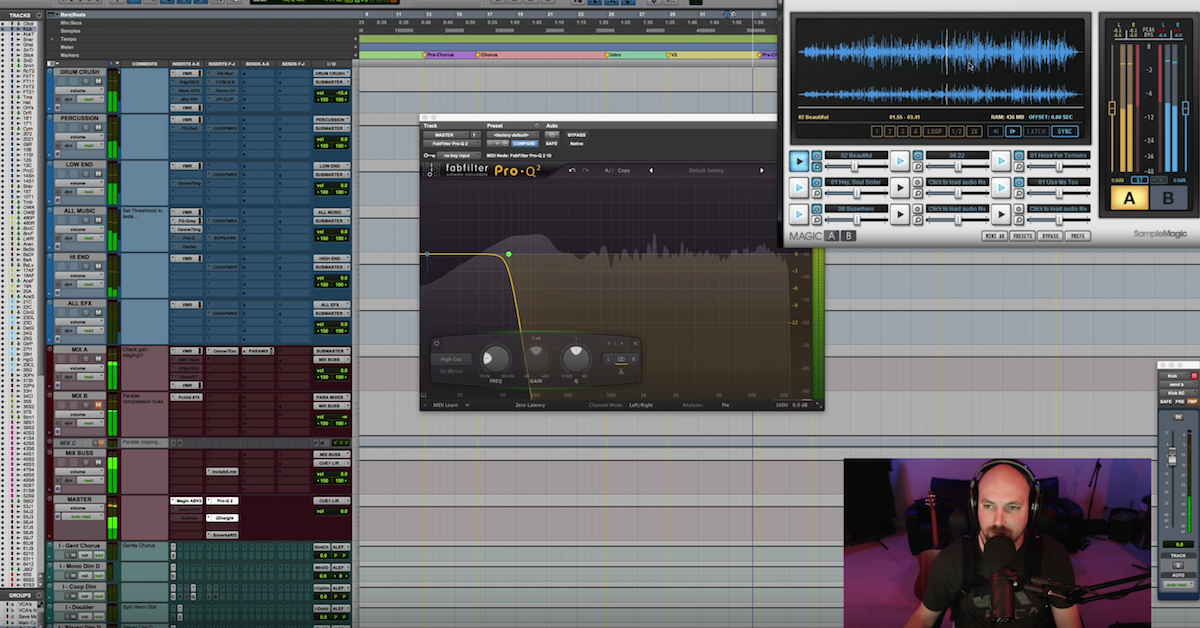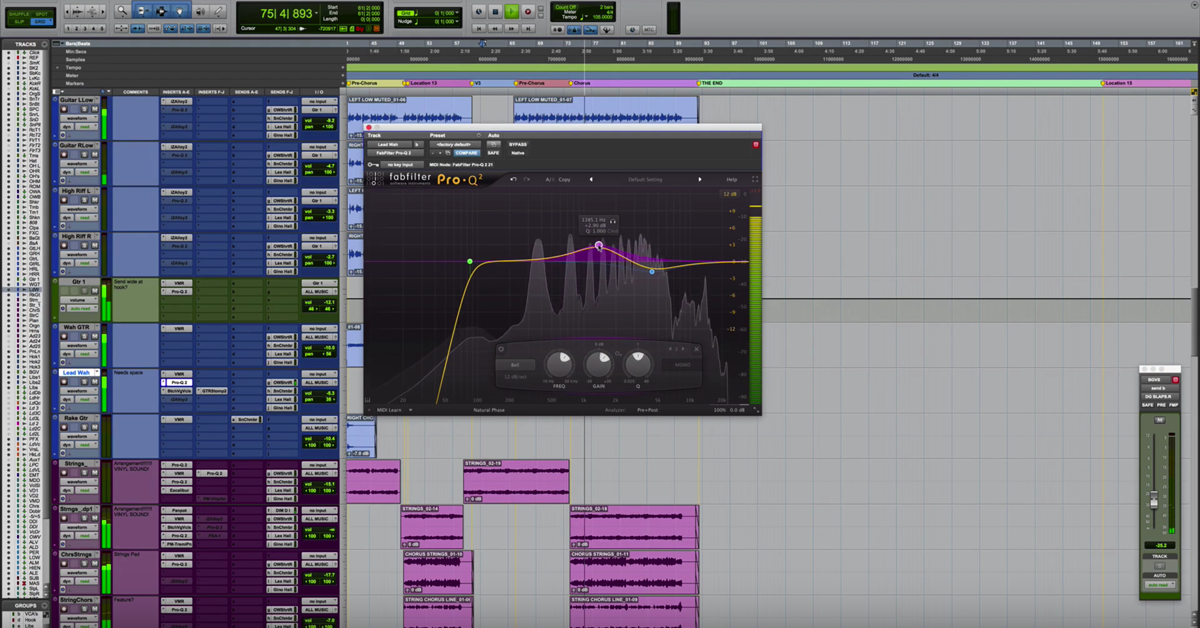5 Things to Do Before Sending a Mix to a Client
Today, I want to talk about a few things that are super crucial to my workflow that I’ve learned from scattered professionals over the years of watching tutorial videos and interviews and all that kind of stuff, and then just experience.
I’m going to lay out a few things that I do every mix before I send a mix to a client, and I think it’s going to be valuable to you, so kicking it off, I’ve been doing a lot of custom video mix reviews lately. People will go and buy my training courses, and now I’ve got an option where you can pay a little bit more, and get a discount on my mix critique service, so you’re going to be able to send me your track, I’m going to import it in, I’m going to digest it, take some notes, give you some inside into some things that I personally tastefully will feel that can help your mixing, and do a video. 15-20 minutes of my talking, showing you some examples, walking you through some techniques, parallel compression, EQ, could be effects, anything that I feel could help the song out. Direction, concepts, strategies, all that good stuff, and I’m going to send that back and then we’re going to communicate via e-mail. It’s a great process, it’s helping a lot of people. I’m really stoked to be able to offer it.
That all said, let’s jump into – that’s what inspired this tutorial. So let’s get into this little check list that I’ve got here.
The first thing that I want to talk about is referencing. Now, it’s preached all over the place. I know Graham from therecordingrevolution.com has mentioned it, David Pensado mentions it, referencing.
Well, the first thing I do is I reference the rough mix while I’m actually setting up the session. A lot of times, I’ll pull in and listen to my clients rough and be listening to it while I’m doing some of the technical setup stuff, and I feel like that’s extremely important for many reasons.
One of them being they’ve been listening to this. They wrote the song, produced the song, they got excited about it, they put it in their car, they’re going, they’re jamming, they’re rocking out, and this is what they’re telling their friends and their close ones and their family, and all that stuff, this is what they’re vibing to.
Even in terrible rough mixes, I still find gems of information. Some really valuable stuff can be in the rough mix. Some rough mixes are incredible, and it almost challenges you as a mixing engineer to beat the rough mix, but in the case of even terrible rough mixes, I find that there’s a lot of valuable stuff in there.
So listen to that, balances, levels, creative choices, effects, all that kind of stuff, pay attention to it, and something I do is I match the level of their rough mix, whether it’s distorted and slammed to death, or if it’s not very loud at all.
I will match the level with my final mix and put that in DropBox or Drive or however I’m sharing it, and I’ll put the both of them together so they can hear their rough, and they can hear that I not only respected their choices with the rough mix, but I improved it, and they hear an equal playing field example, and theirs isn’t louder and they think they’ve beat me, or other way around where it’s deceiving, where mine’s louder and they feel like I’ve cheated them on the rough mix, so.
Anyways, a couple of tips there with reference mixes or for using the rough mix, now I use a pro mix, and I use it from the very beginning. I used to wait until kind of the middle or end of my process to import a pro mix, but I go on iTunes, I buy it, and I import it into my session, and I’m very adamant about referencing from the beginning.
So I’m going to go and either ask the client, or I’m going to go pick my own, and I’m not necessarily looking for creative tips to rip off. You get those from the tutorials like these and that kind of stuff, but I’m more listening for the sonics, levels, and balances.
I recently mixed a song. We used a Rascal Flatts song against my song. It’s actually the song for The Mix Academy November 2014 is what we’re in right now, and it was super helpful, because I found that I kept wanting the piano and the strings and all this stuff to be symmetrical and on both sides, and it just felt like a lumpy stereo mix. It wasn’t very big, it wasn’t very wide, and it was empty.
Well, then I referenced Justin B. Banks mix from a Rascal Flatts song, and the strings were all on the right, and the organ was just on the left, and all these little things that really helped me to pick my panning positions better that contributed to a more full wider mix. So, that’s a great thing. Listen to panning positions and all that kind of stuff, but also the obvious thing which is sonics and levels. Reference the low-end, reference the mid-range, reference the top-end.
If you don’t know how to do that, I’ve got a technique that I will take and open up an EQ. I use the Pro-Q2 all the time, and I will take and start all the way at the low-end, and I’ll suck everything out of the reference track. I’ll hit play, I’ll listen to it, and I’ll hear what they’re doing 30Hz and below. Then I’ll click over to mine and see if I’ve got anything 30Hz and below.
If I hear some of their kick rumbling but I don’t hear mine, then I know that sonically, I can go in and I have that reference to add and remove and do whatever.
Well, then I can slowly open that up, go up 10dB at a time, or whatever your taste or preference is, and then I can reference my 45 and below, and their 45 and below. Then 50, 55, 60, 100, work my way up all throughout this frequency range, referencing and A/Bing what I’ve got going on against my reference track and that is an incredible tool.
The other way that you could do it is once you get past the lows, you can actually remove them from the equation, so you’re a little more focused on what you’re listening to. Pro-Q allows you to select both of those ranges and you can move the together, so now you can really focus in on the low-mids, move up to the middle, the high-mids, the upper stuff, the high-end, the sizzle, all that kind of crap.
Now, you can reference and really pin-point what you’re doing against the reference.
Now, don’t take it for – it’s not a perfect science, you’re not going to take yours and match theirs exactly, that’s not the point of this. It’s just to have it as a reference to ball-park. So, stylistically, you may prefer to have a little bit more top end in your cymbals against what the reference did, or you may want a little more of the exciting upper-mid range or whatever, but sonically you’ve got it there. You can reference it, you can use it as a tool to help you to better shape your mix.
So, that’s one way of doing something. That’s what I do before I send a mix to a client. Make sure that I’ve done that.
The big thing, I kind of covered it in that, the low-end, that’s where the men and the boys kind of clash. Really take a note of that 30-50, below 100, 120, 150 even with the bass, the kick are doing. If you’ve allowed any of the instruments to have a presence below 100, what’s your point for having it in there? Is it there the whole time? That kind of stuff that can really help you to step up your quality of your mixes. The next thing was listening environment.
Listen on your monitors, you’ve got headphones, all the time I’m pulling up and I’m listening on my Apple earbuds that come with my Apple iPhone, and I actually find that those work better at night anyways. I’m pretty used to listening to those, and they’ve got a little bit of a bump in the low-mids, but I like it. Sounds kind of cool.
You can also reference. Don’t forget, anytime you switch referencing listening positions, reference pro tracks, and then reference your track, and go back and forth so you can kind of feel what’s changing. Take notes. Don’t forget to write it down, keep it somewhere, put it on a note in your phone, whatever the case may be.
I also use my Bose computer speakers. They’re pretty, I don’t know, like, $150 Bose computer system that I happen to have. I think it’s actually my wife who got these for her desk, and they somehow ended up on my desk, but I use those a lot and I’ll A/B, and sometimes I’ll notice that on my Yamaha’s or my headphones, I’ll notice that I’ve got a really great kick sound in the low, the bottom it feels great, but then I listen on the Bose, and my reference track has done a better job at getting that 100-110, 80-90, whatever it is in there bumping and pumping on their kick, but then mine lacks that, so then I can hear that better on those Bose, and I can go back and make adjustments and reference some more.
Then you’ve got the laptop, go to your car, take your notes and make sure that you don’t just take your notes at night after a long mixing day. Make sure before you send a mix to a client, this is my last note here I’m pretty sure, don’t send it to them at night.
I learned this from a guy named Salvo out of Nashville. You guys have heard me spit his name out before. He’s a multi-Grammy award winning mixer; he’s incredible. He shared some knowledge with me recently, and that’s one of them that I really tried to take to heart. Make sure that you wake up fresh, get your coffee, get your breakfast, go to the studio, listen again, and you may be pretty shocked at how bad your mix is. You may be excited, it may have worked out, but you can make any final tweaks. You’re going to hear some things. Touch it, tweak it one last time, and then send it to the client. You’re going to really cut down on your revision process if you listen to that advice.
Just some things that I thought would be worth mentioning. EQ matching, I’ve done a tutorial on that recently. That’s a great way to compare if you’re hearing it one way, but then you look and your EQ match shows up extremely different. It’s all dramatic and all over the place, then you know you’ve got some work to do. You can get back to it.
There’s a program out there called Sample Magic, Magic AB. That’s a pretty cool program, you can pull that open and you’ll have reference tracks that you can already have in place. So there’s already these 9 reference tracks, and you can A/B from your mix to theirs. You can see the overall RMS, the gain reduction that’s going on, and you can compare. This is a great tool as well. I use it all the time.
Yeah, so I felt like those would be important to you. Hopefully, those are valuable. You may be already doing all of them, you may not be doing any of them, whatever the case is, hopefully that helps you out. Davidglennrecording.com, themixacademy.com. If you are interested in having some custom video mix critique done, go to mixingvocals.com, mixingacoustic.com. Those products include the option to upgrade for the custom mix critique.
Hopefully you dig that. Check out theproaudiofiles.com. Like, subscribe, share, and we’ll catch you in the next one.
My voice is going from doing all these tutorials, so forgive me, I sound like a teenage boy.
Hopefully you guys are diggin’ this, we’ll talk to you soon. Thanks.





